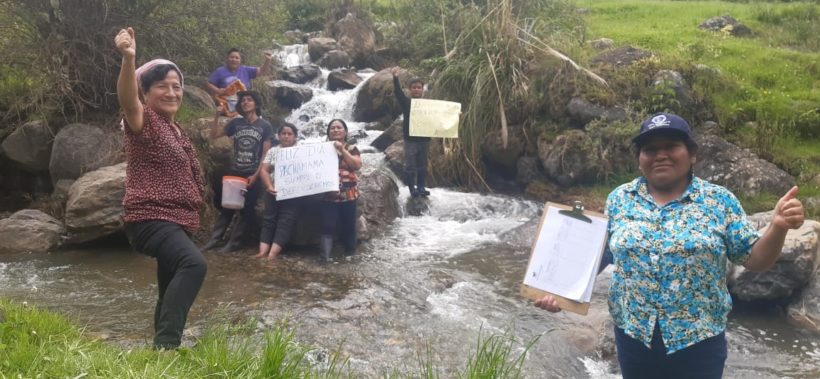“Water is part of our culture, it is intrinsic to the Amazon,” says José Manuyama, a member of a river defence committee in his native Requena, a town located in the department of Loreto, the largest in Peru, with 28 per cent of its territory.
By Mariela Jara
Despite the vast size of this Amazonian region, located in the northeast of the country, data from 2020 indicated that it had just over one million inhabitants, including some 220,000 indigenous people, in a country with a total population of 32.7 million.
A teacher by profession and a member of the Kukama indigenous people, one of the 51 officially recognised as part of the Peruvian Amazon, Manuyama recalls his childhood near a stream in an interview with IPS during the Second Inter-regional Meeting of Defenders of Rivers and Territories, held in Lima on Wednesday.
“We waited for the flood, we waited for the emptying, because that was our world. When water comes, it’s for bathing, for fishing, it’s a whole world adapted to water,” she recalls.
And he adds: “We also waited for the low water to pass, which left us enormous land where the forest would grow and where my mother would plant her cucumber and corn. Seeing the stream, the clear water, that beautiful, fertile world is where I grew up.
Today, close to 50 years old, Manuyama is also an activist in defence of nature and rivers in the face of the incessant aggressions of extractive economic activities that threaten the different forms of life in his territory.
Manuyama is a member of a collective in defence of the Nanay River, which runs through the department of Loreto, is a source of life and one of the tributaries of the Amazon, the river that rises in the Andean highlands of southern Peru, is considered the longest and most abundant in the world and extends its basin through eight South American countries.
“We started as the Water Defence Committee in 2012 when the Nanay basin was threatened by oil activity. Together with other collectives and organisations we managed to stop that initiative but since 2018 there has been a second extractive wave with mining that is damaging the basin and seems to be the latest brutal calamity in the Amazon,” he warns.
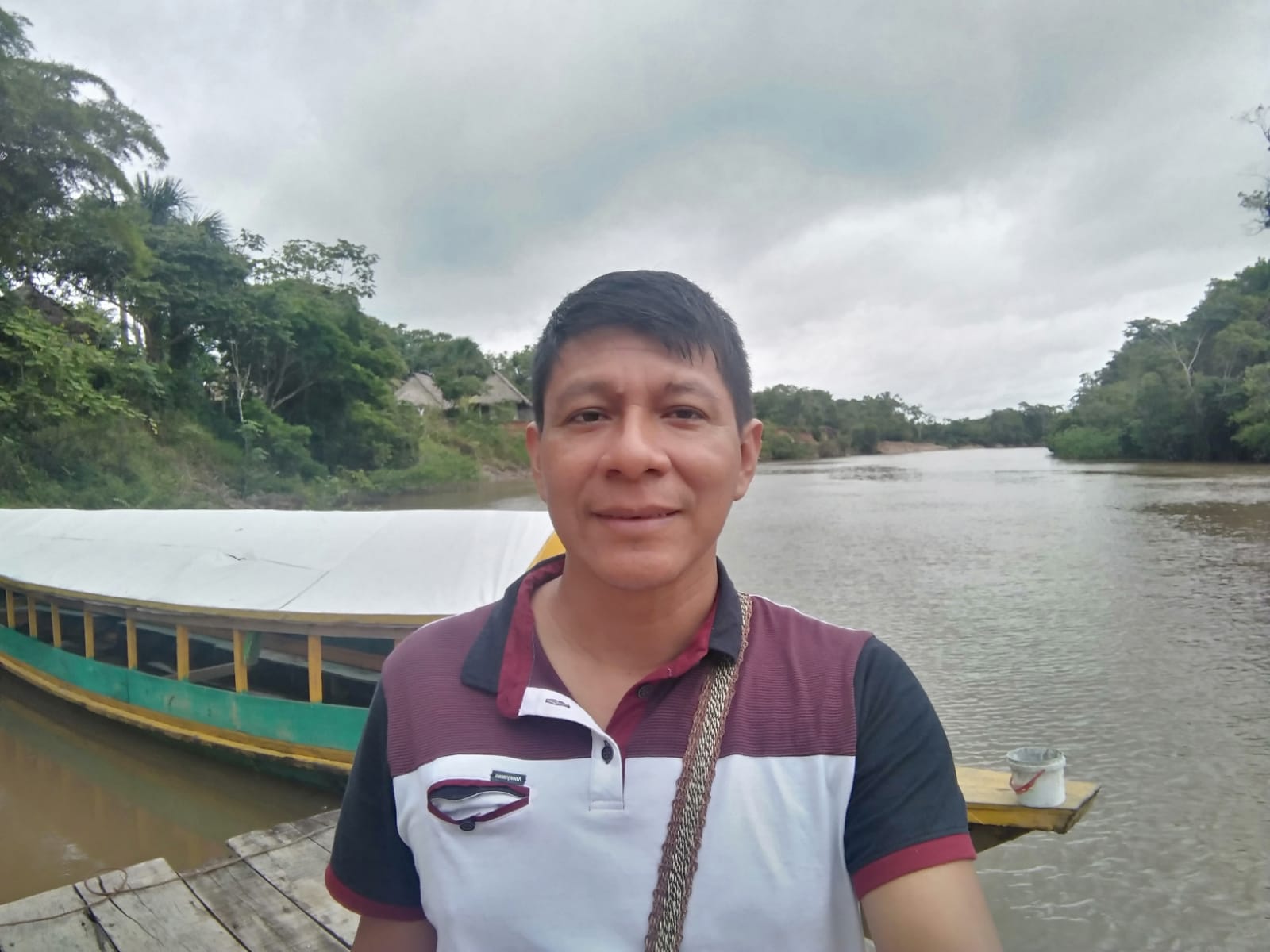
José Manuyama, a member of the Kukama indigenous people and a teacher committed to the protection of nature, in front of the Momón River, a tributary of the Nanay River, which environmental defenders have been defending from the extractive activities that threaten its existence in the department of Loreto, in the Peruvian Amazon. Photo: Courtesy of José Manuyama
Their struggle was weakened during the pandemic, when the “illegal, polluting, million-dollar mining”, as he insists on calling it, remained active. Their complaints have gone unheeded by the authorities despite the harmful impacts of pollution, such as on people’s diets, which depend heavily on the fish they catch.
However, she is hopeful about the new national articulation of defenders of rivers and territories, an effort that emerged in 2019 and which on Wednesday 25 held its second national meeting in Lima with the participation of 60 representatives from the Amazon, Andes and Pacific coast regions of the country.
“It is important because we strengthen ourselves in a common goal of defending territories and rights, confronting the various predatory extractive waves that exist in this dominant social economic system that uses various factors in a chain to achieve its purpose. The battle is not equal, but that is what resistance is,” Manuyama says.
Like a river’s watersheds
Ricardo Jiménez, director of the non-governmental Forum Solidarity Peru, an institution that accompanies the articulation of collectives for the protection and defence of rivers, explained that this was born as a response to the demands of various sectors in the face of the depredation and growing illegal mining and logging activities that are detrimental to water sources.
The convergence process began in 2019, he recalled, with the participation, among others, of the Amazonian Wampis and Awajún indigenous peoples, with women defenders of life and Pachamama from the northeastern and Andean department of Cajamarca, and with the peasant patrols from various regions of the country.
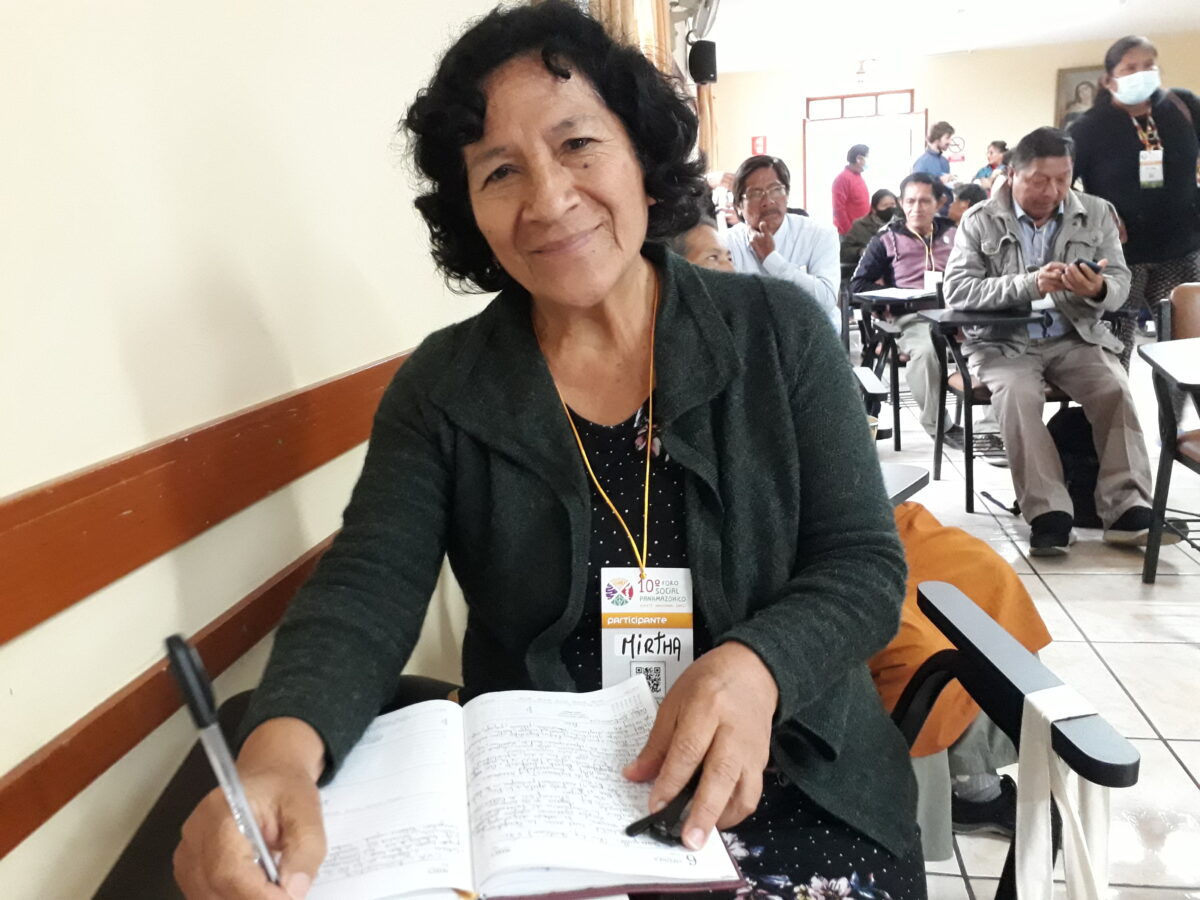
Mirtha Villanueva, defender of life and Pachamama in the region of Cajamarca, in northeastern Peru, during her participation in one of the sessions of the II Interregional Meeting of Defenders of Rivers and Territories, which brought together 60 participants from different parts of the country. Photo: Mariela Jara / IPS
The first important milestone of the initiative occurred in 2021, when they held their first national meeting, at which they formed a National Promotional Committee of Defenders of Rivers and Territories.
They approved an agenda that they submitted to the then Minister of Culture, Gisela Ortiz, who remained in office for only four months and was unable to attend to the proposal to form the Multisectoral Roundtable for dialogue to address issues such as environmental remediation of legal and illegal extractive activities.
The proposed roundtable also proposed the development of criteria for the protection of the headwaters of river basins, and the protection of river defenders in the face of the criminalisation of protests and their initiatives.
At this second national meeting, the Promoting Committee updated its agenda and made synergies with the National Network for the Protection of Rivers, a space made up of non-governmental organisations.
It also joined the river action initiative of the Pan-Amazon Social Forum (Fospa), whose tenth edition will be held between 28 and 31 July in Belem do Pará, in the Brazilian Amazon, and whose national chapter will take place on Friday 27 May.
In fact, there will be three days of activity in the Peruvian capital by the defenders of the rivers and their riverside communities, who on Thursday 26th participated in a march of indigenous peoples, organised by the Interethnic Association for the Development of the Peruvian Jungle (Asociación Interétnica de Desarrollo de la Selva Peruana).
“There is an articulation of the social collectives at the national level and also with their peers at the Pan-Amazonian level, it is a path with specificities but coinciding,” Jiménez told IPS.
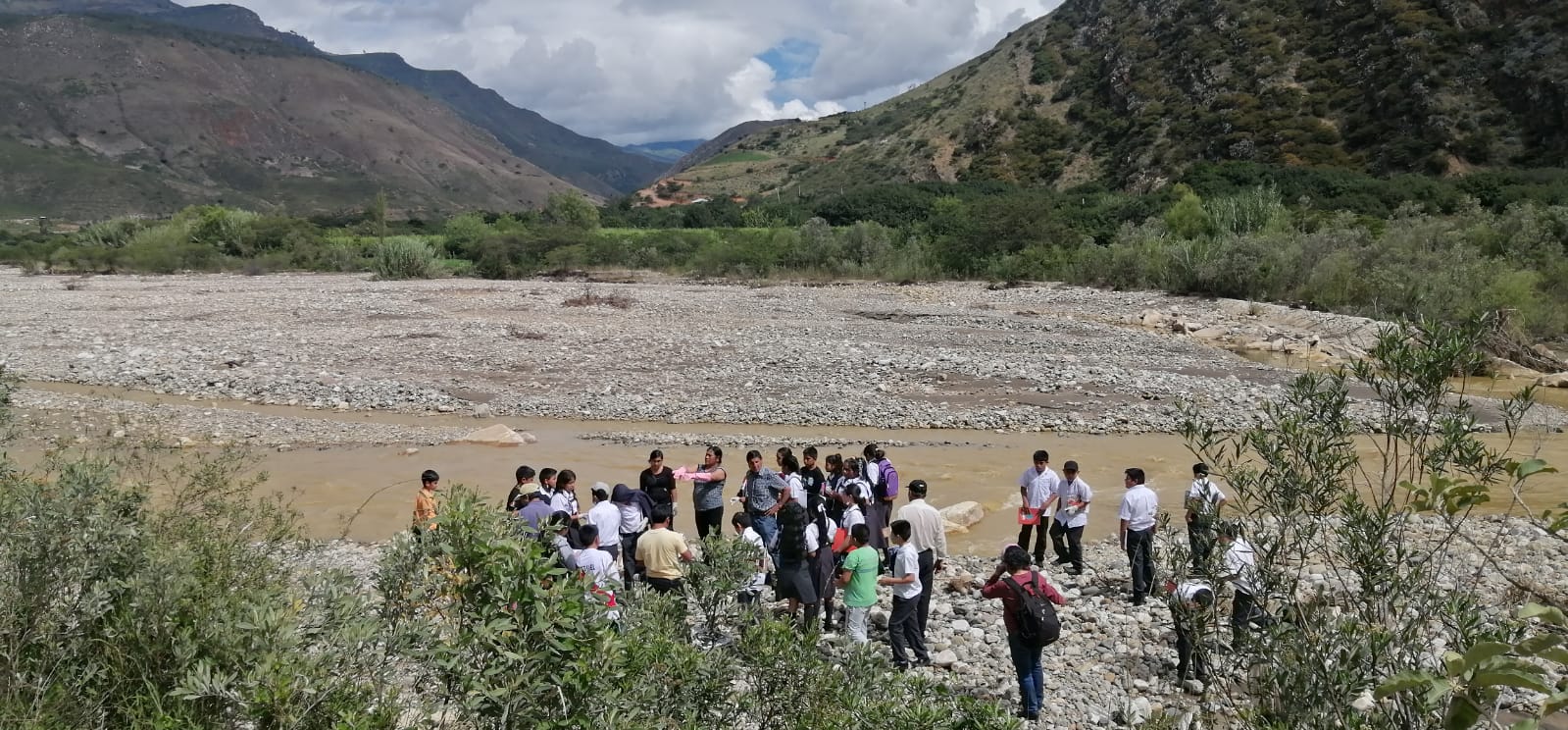 A group of villagers is involved in monitoring and surveillance of the Chimín River in the Condebamba valley, in the Cajamarca region of northeastern Peru. The river is polluted by illegal mining activity, which harms all the communities along its banks, as it irrigates 40% of the crops in the area. Photo: Courtesy of Mirtha Villanueva
A group of villagers is involved in monitoring and surveillance of the Chimín River in the Condebamba valley, in the Cajamarca region of northeastern Peru. The river is polluted by illegal mining activity, which harms all the communities along its banks, as it irrigates 40% of the crops in the area. Photo: Courtesy of Mirtha Villanueva
Rivers have no borders
Mirtha Villanueva is an activist defending life and Pachamama (mother Earth, in Quechua) in Cajamarca, in the northeastern department of Peru, where more than a decade ago the emblematic slogan “water yes, gold no” was coined as part of the people’s struggle to defend their lakes and wetlands against the development of the Conga mining project of the Yanacocha gold company, led by a US company.
By a US company.
This project was suspended, but only temporarily, afterwards years of social protests against the open-pit gold mine, which in 2012 caused several deaths and led to a state of emergency being declared for several months in the region, in one of the most critical episodes in the communities’ struggle against the impact of extractivism on their environment and their lives.
Much of Villanueva’s 66 years have been dedicated to defending nature’s assets, the rivers, in order to guarantee dignified lives for the people, in a struggle that he knows to be quite unequal in the face of the economic power of the mining companies.
“The defenders of the rivers need to strengthen ourselves, and I hope that at the Fospa Peru meeting we will approve a plan of action that is coordinated with our brothers in Ecuador, Bolivia and Brazil, because our rivers are also coordinated, they have no borders,” he told IPS during an interview at the meeting in Lima.
“We need to strengthen ourselves locally and internationally in order to have an impact with our actions. We receive 60 percent of our rainfall from the Amazon rainforest. How can we not take care of the Amazon?
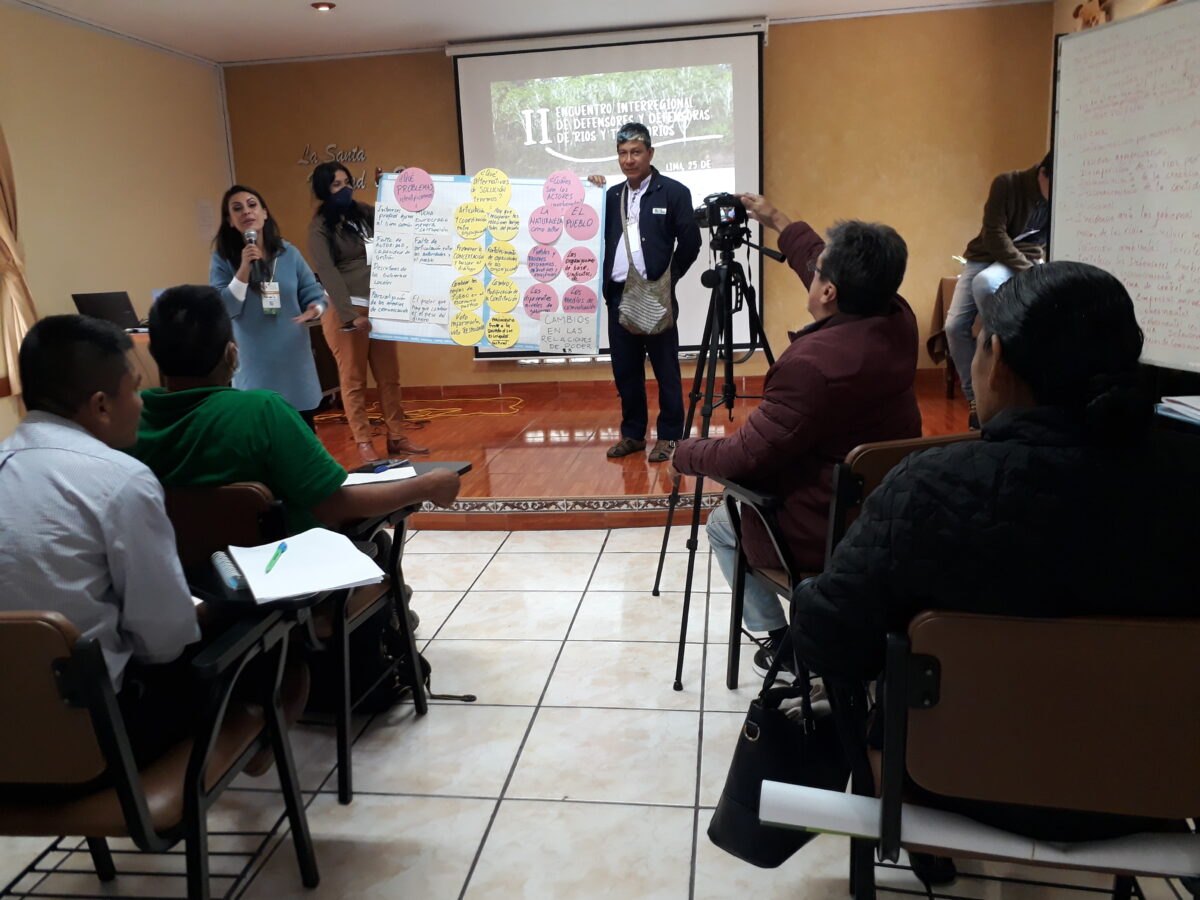
José Manuyama, on the right of the poster, during one of his speeches at the II Interregional Meeting of Defenders of Rivers and Territories, which brought together activists from different parts of Peru in Lima. His group analysed power relations in the context of the risks surrounding the country’s rivers, especially those in the Amazon. Photo: Mariela Jara / IPS
The work she does with the environmental committees is titanic. She recalls the image of peasant families who denounce the change in the rivers and how it has caused rashes on their children’s skin.
When they went to complain to the mine, they were told: “When I came here, your river was already like this. Why do you want to blame me? Prove the opposite.
“In this situation, the peasant farmer remains silent, which is why it is important to work in the communities to promote vigilance, monitoring of ecosystems and resources. We work with macroinvertebrates, creatures present in the rivers that are indicators of clean or polluted water, gradually training the population,” he explains.
This is an urgent task. He gave as an example the case of the district of Bambamarca, in Loreto, which has the highest number of environmental mining liabilities in the country: 1118. “There is only one river alive, the Yaucán river,” Villanueva lamented.
He also mentioned the Condebamba valley, “the second most diverse in Peru”, and whose farmland is 40% irrigated by contaminated water from the Chimín river due to mineral extraction.
“In Cajamarca we have 11 committees monitoring the state of the rivers, we all suffer reprisals, but we cannot stop what we are doing because health and life are at stake”, both present and future, he said.


